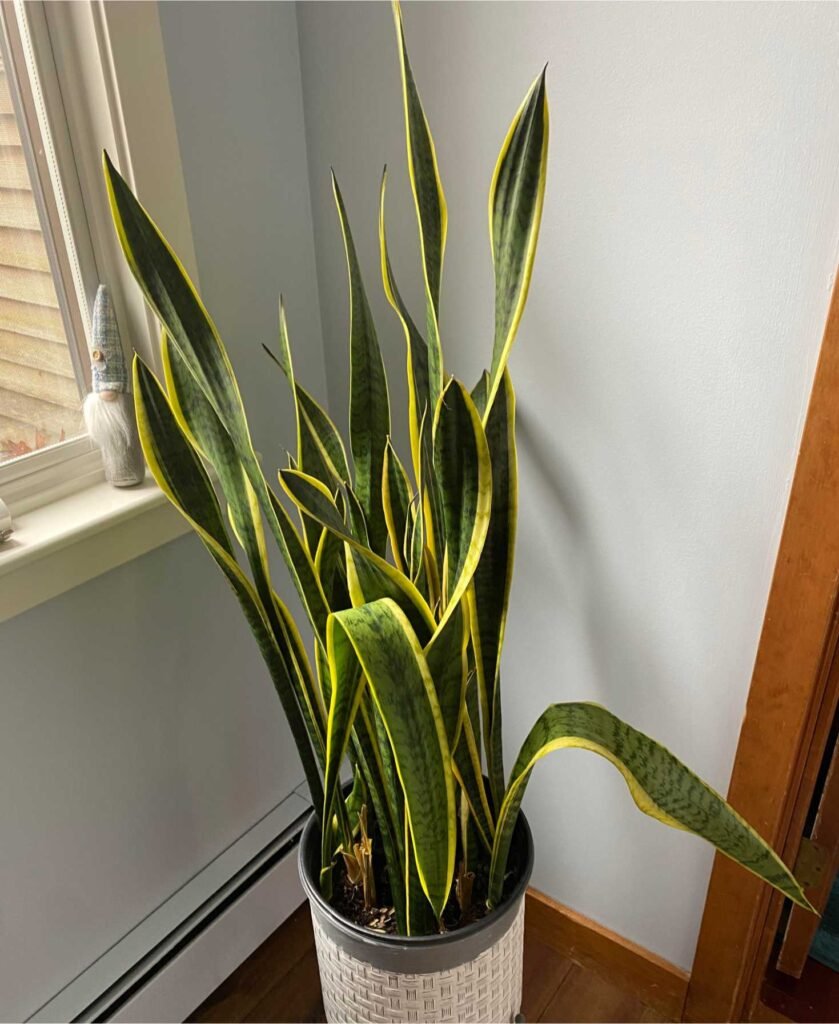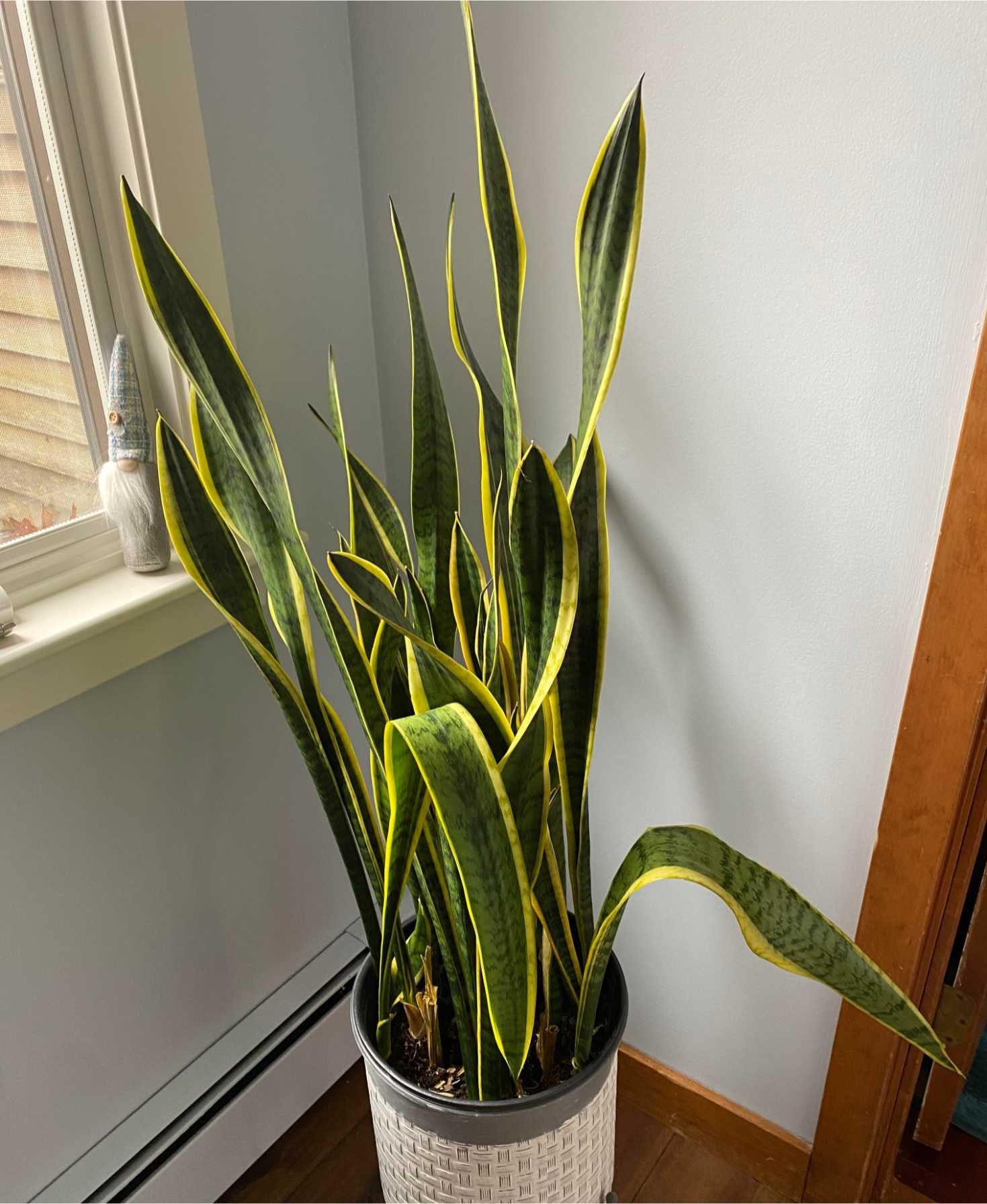Snake plants, also known as Sansevieria or mother-in-law’s tongue, are among the most resilient and low-maintenance houseplants. Their architectural form, upright leaves, and ability to tolerate various conditions make them a favorite among plant enthusiasts.
However, even the hardiest plants like snake plants can encounter issues, and one of the most common concerns is drooping. When a plant that is supposed to stand tall starts to sag, it’s a signal that something is wrong.
In this comprehensive blog post, we will delve deep into the reasons why your snake plant might be drooping, how to prevent this from happening, and the steps you can take to fix the problem. We’ll explore everything from watering habits and lighting conditions to pest infestations and environmental stressors.
Table of Contents
Introduction: The Snake Plant’s Unique Characteristics
Snake plants are native to West Africa and belong to the Asparagaceae family. Their thick, upright leaves store water, which allows them to survive in arid conditions. Unlike many other plants, snake plants are tolerant of neglect and can thrive in both low and bright indirect light, making them a perfect choice for both experienced gardeners and beginners.
These plants are often chosen for their air-purifying qualities, as they are known to remove toxins like formaldehyde, benzene, and xylene from indoor air. Additionally, they are known for their low water requirements, which makes them ideal for individuals who don’t have a green thumb.
However, when your usually sturdy snake plant starts drooping, it can be concerning. Let’s take a closer look at the factors that can cause this issue and how you can resolve it.

Why Is My Snake Plant Drooping?
There are several reasons why your snake plant might be drooping, and diagnosing the problem is key to saving your plant. Here are the most common causes:
1. Overwatering: The Silent Killer
One of the most common reasons for snake plants to droop is overwatering. Snake plants are succulents, which means they are adapted to dry conditions and have water storage abilities in their leaves.
They prefer to dry out between waterings and can go long periods without water. Overwatering leads to root rot, which can cause the plant’s roots to decay, making it difficult for the plant to absorb water and nutrients. As a result, the leaves become soft and start to droop.
Signs of Overwatering:
- Yellowing leaves
- Soft or mushy texture at the base of the plant
- Foul odor coming from the soil
- Brown or black roots (signs of root rot)
Solution:
- Let the soil dry out: Allow the soil to completely dry before watering again. Make sure your pot has drainage holes to prevent water from sitting at the bottom.
- Repotting: If root rot has set in, you’ll need to repot the plant. Gently remove the plant from the pot, cut away any damaged roots, and repot it in fresh, well-draining soil.
- Water less frequently: Snake plants prefer to be watered once every 2-4 weeks, depending on the season and humidity levels.
2. Underwatering: A Neglected Plant’s Response
While snake plants are drought-tolerant, they still require occasional watering to maintain their structural integrity. If you leave your snake plant without water for an extended period, the leaves can begin to droop and curl inward as the plant tries to conserve water.
Signs of Underwatering:
- Dry, crispy leaves
- Leaf tips turning brown
- Soil pulling away from the edges of the pot
Solution:
- Water deeply: Give your plant a deep watering and ensure that the soil is thoroughly soaked. Be careful not to leave the plant in standing water.
- Maintain a consistent watering schedule: While snake plants can go for weeks without water, they still need to be watered at least once every 3-4 weeks in dry conditions. Be attentive to the dryness of the soil.
3. Improper Lighting Conditions
Snake plants are versatile when it comes to lighting, but extreme conditions can cause drooping. In low light, the plant may become weak, with its leaves losing rigidity due to insufficient energy for growth. Conversely, direct sunlight can scorch the leaves, causing them to droop and turn yellow or brown.
Signs of Lighting Issues:
- Pale or yellowing leaves (due to low light)
- Brown, crispy leaf edges (due to excessive light)
- Drooping leaves that seem weak or stretched
Solution:
- Adjust lighting: If your plant is in too much direct sunlight, move it to an area with bright, indirect light. On the other hand, if your snake plant is in low light, try moving it closer to a window or adding supplemental grow lights.
- Rotate the plant: To ensure even growth, rotate the plant every few weeks so that all sides receive equal light exposure.
4. Temperature Stress
Snake plants prefer moderate temperatures between 60-85°F (16-29°C). Exposure to extreme temperatures—whether too cold or too hot—can cause stress, leading to drooping leaves. Cold drafts, in particular, can be harmful, as snake plants are sensitive to temperatures below 50°F (10°C).
Signs of Temperature Stress:
- Leaves curling or drooping after exposure to cold or hot drafts
- Wilting leaves, especially after a sudden temperature change
- Slow growth during cold months
Solution:
- Maintain a stable temperature: Keep your snake plant away from drafty windows, air conditioning units, and heating vents. Ensure the temperature remains within the preferred range.
- Move the plant indoors during winter: If your plant is outdoors, bring it inside when temperatures drop below 50°F (10°C).
5. Poor Soil Drainage
Using the wrong type of soil can also lead to drooping leaves. Snake plants require well-draining soil, such as a cactus or succulent mix. If the soil retains too much water, it can lead to root rot and other problems.
Signs of Poor Drainage:
- Water pooling at the surface of the soil
- Constantly moist or soggy soil
- Drooping and wilting despite proper watering
Solution:
- Repot in well-draining soil: Use a cactus or succulent mix that allows excess water to escape. You can also mix regular potting soil with sand or perlite to improve drainage.
- Check the pot: Make sure your pot has drainage holes. If not, transfer your plant to a container that allows water to drain properly.
6. Root Bound Issues
Snake plants grow slowly, but over time, their roots can outgrow the pot, becoming “root bound.” When this happens, the roots can’t absorb water and nutrients efficiently, leading to drooping leaves.
Signs of a Root-Bound Snake Plant:
- Stunted growth
- Roots growing out of the drainage holes
- Drooping or leaning leaves
Solution:
- Repot the plant: If your snake plant is root bound, gently remove it from its pot and transfer it to a slightly larger one. Be sure to use fresh, well-draining soil when repotting.
7. Pest Infestations
Though snake plants are generally resistant to pests, they are not entirely immune. Common pests that attack snake plants include mealybugs, spider mites, and aphids. These pests can weaken the plant, leading to drooping leaves.
Signs of Pest Infestation:
- Tiny white cotton-like masses (mealybugs)
- Fine webbing on the plant (spider mites)
- Sticky residue on leaves (aphids)
- Yellow or brown spots on leaves
Solution:
- Remove pests manually: For minor infestations, you can remove pests by wiping the leaves with a damp cloth or using a cotton swab dipped in rubbing alcohol.
- Use insecticidal soap: If the infestation is more severe, use a mild insecticidal soap or neem oil to treat the plant. Be sure to follow the instructions on the product.
8. Natural Growth Pattern
It’s important to note that as snake plants age, their lower leaves may naturally droop or die off. This is a normal part of the plant’s growth cycle. In this case, you don’t need to worry about overwatering, lighting, or other factors. Simply prune the affected leaves to keep your plant looking tidy.
Signs of Natural Aging:
- Lower, older leaves starting to droop while newer leaves remain upright
- Leaves turning yellow or brown over time
Solution:
- Prune the old leaves: Use clean, sharp scissors to cut away the yellowing or drooping leaves at the base of the plant. This will encourage new growth.
Preventing Drooping in Snake Plants
Preventing drooping in snake plants requires a combination of proper care and attentiveness. Here are some general tips to keep your snake plant healthy:
- Watering: Water only when the soil is dry to the touch. Use a moisture meter if you’re unsure.
- Light: Provide your snake plant with bright, indirect light, but avoid direct sunlight.
- Temperature: Maintain a stable temperature and avoid placing your plant in drafty areas.
- Soil: Use well-draining soil and a pot with drainage holes to prevent waterlogging.
- Repotting: Repot your snake plant every 2-3 years to ensure that the roots have enough space to grow.
- Pest control: Regularly inspect your plant for pests and treat any infestations promptly.
Fixing a Drooping Snake Plant: Step-by-Step Guide
If your snake plant is already drooping, don’t panic! Here’s a step-by-step guide to help you revive your plant:
Step 1: Identify the Cause
Examine the plant closely to determine whether the issue is overwatering, underwatering, lighting, or pests. Look for signs such as yellowing leaves, soggy soil, or pests on the plant.
Step 2: Adjust Watering Habits
Once you’ve identified the cause, adjust your watering routine. If the plant is overwatered, allow the soil to dry out completely before watering again. If it’s underwatered, give it a deep watering.
Step 3: Move to a Better Location
If lighting is the issue, relocate the plant to an area with bright, indirect light. Avoid placing it in direct sunlight, which can scorch the leaves.
Step 4: Repot the Plant (If Necessary)
If your plant is root bound or suffering from poor drainage, repot it in fresh, well-draining soil. Choose a pot that’s just one size larger than the current one to avoid overwhelming the plant with too much space.
Step 5: Prune Damaged Leaves
Use clean, sharp scissors to remove any dead or severely damaged leaves. This will encourage new growth and help the plant focus its energy on healthy leaves.
Conclusion
A drooping snake plant can be a sign that something is off in its care, but with the right adjustments, it’s possible to revive your plant and restore it to its upright, vibrant self.
By understanding the common causes—such as overwatering, improper lighting, and temperature stress—you can take proactive steps to prevent drooping in the future.
With a little attention to watering, lighting, and general care, your snake plant will thrive, providing you with a beautiful, low-maintenance companion for years to come.
Remember, snake plants are resilient and can often bounce back from neglect or minor care mistakes, so don’t be discouraged if your plant looks a little sad. With the right approach, you’ll soon have a healthy, upright snake plant once again.
My name is Shahriar Robin, and my journey with plants began in childhood, igniting a lifelong passion that blossomed alongside my career as a nutritionist and sports trainer. Through SnakePlant.org, I channel this dedication, merging expertise from nutrition and sports training to nurture a platform sharing all-encompassing knowledge about Snake plants. This website mirrors my commitment to cultivating greenery, offering comprehensive insights on growth, maintenance, and nurturing practices for these captivating plants. My mission is rooted in leveraging diverse expertise to enhance plant care practices, believing profoundly in the therapeutic impact of nature. Join me on SnakePlant.org, where I unite a thriving community of enthusiasts, sharing experiences, insights, and the profound joys of planting.

